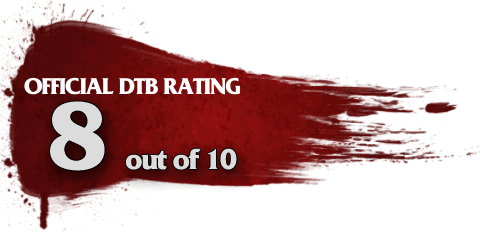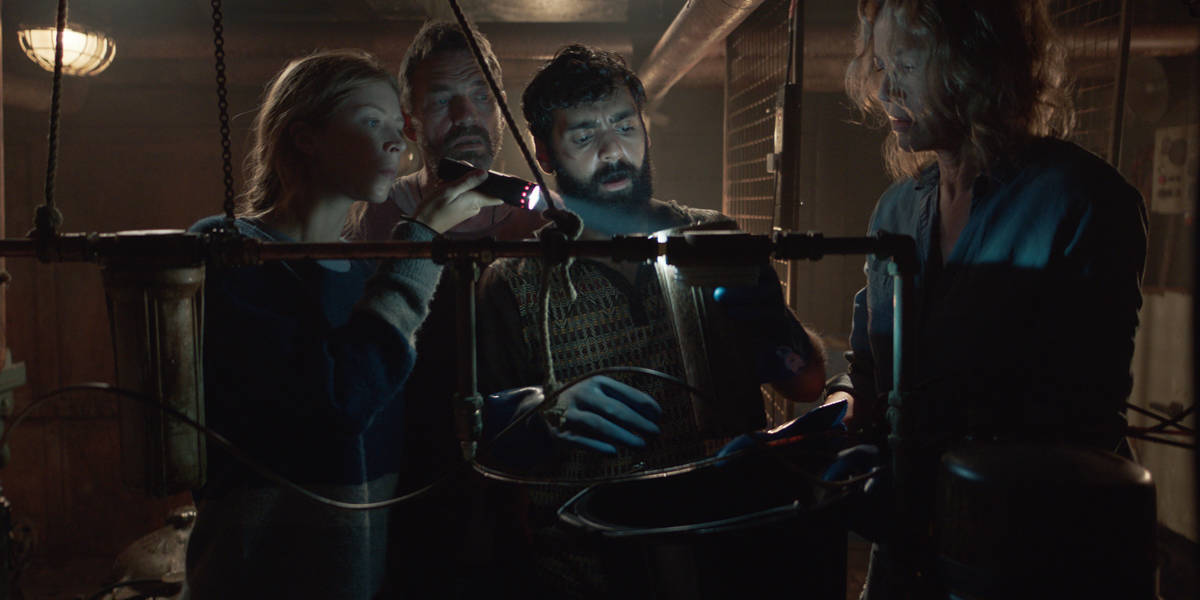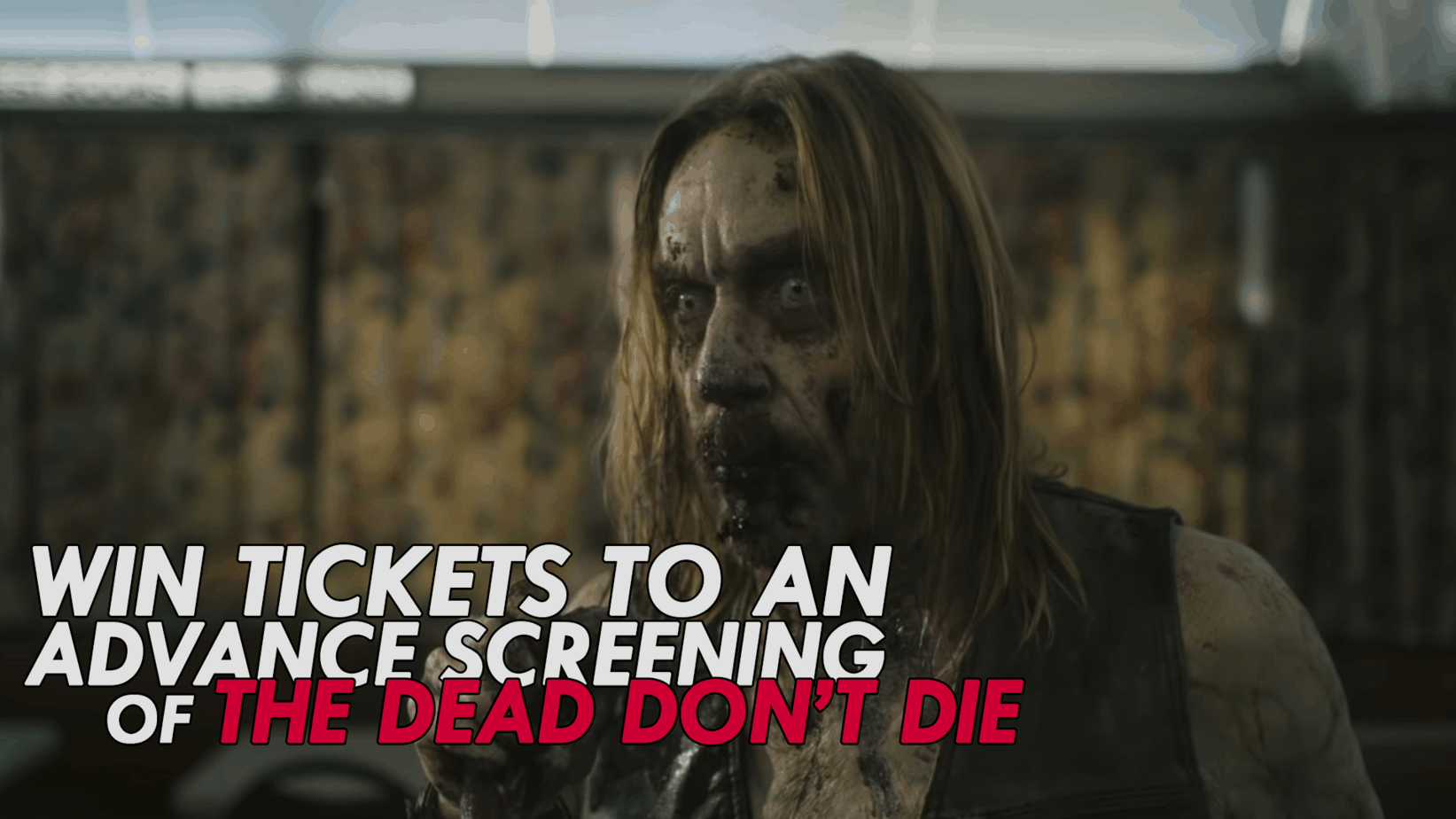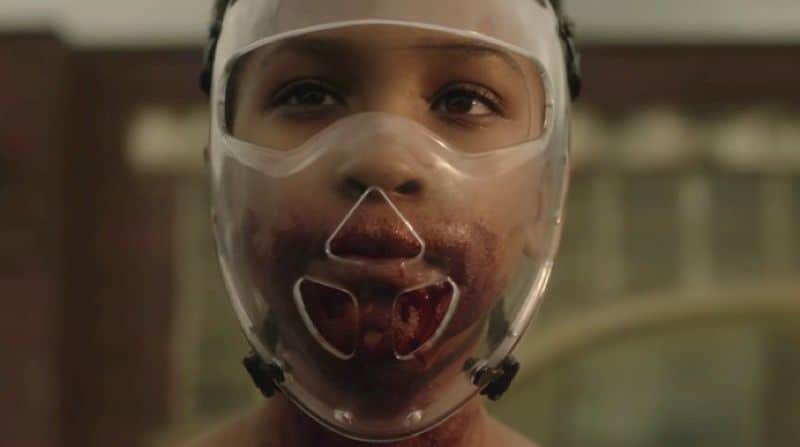Book Review: ‘DUST’ by Joan Frances Turner

Fans of zombie fiction have an endless library of books to chose from that explore the zombie apocalypse scenario from the survivor perspective, but did you ever wonder what it’s like from the zombie’s point of view? Do they think? Dream? Love? Even die? Joan Frances Turner cites her first viewing of George Romero’s Night of the Living Dead (1968) as the impetus for creating her debut novel Dust (released by Ace Books in September 2010), but instead of beating an undead horse she explores the mythos from a typically silent character, save for the moans and groans; the zombie. I would have missed Dust if it wasn’t for the eye-catching cover. The single wilted leaf, glossy remnants of green accented with yellow and red, against a stark matte gray cover initially grabbed my attention. I was further tempted by the rare setting in my own home state of Indiana, but it was the opening line that officially sealed the deal: “My right arm fell off today. Lucky for me, I’m left-handed.” Turner’s rotten tongue-in-cheek attitude, sophisticated character building, and infusion of less obvious influences, like Carnival of Souls (1962), make Dust a standout entry among the horde.
Jessie was 15 when she died her human death in a car accident 9 years ago. After she clawed her way out of her grave she joined up with Teresa’s undead gang, the Fly-By-Nights. They hunt together, eat together, sleep together and occasionally, when the music sounds, they dance. Everything is dead life as usual until Teresa starts disappearing for days at a time and emits a foul pungent smell, a smell Jessie encountered during a surprise run-in with a sickly Hoo (zombie slang for humans). As Jessie tries to figure out what’s making Hoos sick and uncover the mystery of Teresa’s odd behavior she meets with a figure from her past forcing her to reconcile old demons and face a new illness that threatens to wipe out the undead completely.
At its core, Dust is Jessie’s coming-of-age story. She embraces the zombie way of life and tries to abandon her human memories only to find they keep coming back to haunt her. Jessie is sympathetic and believable as an inexperienced, but eager adolescent. She is joined by a colorful cast of characters as well, like the once-upon-a-time 50’s greaser Joe with whom she shares a subtly romantic relationship. Jessie clings to the oldest in the group, Florian, who fills in as her father offering companionship and guidance. Turner gives her zombies plenty of personality to contrast the massive hordes of faceless living dead we are used to.
Turner takes textbook zombie behavior and exploits it in innovative ways, like the zombie’s method of communication. While they can’t speak in the traditional human sense, instead they communicate via brain radio using “waves of telepathic sound” and each person has their own unique instrument. Jessie’s confidant, Joe, communicates in screeching electric guitar and Florian’s sound, as the oldest and dustiest, strums a banjo. Turner conducts the musical dialogue like a well-orchestrated band. Not only is this a unique angle, but the association of sounds elevate emotional scenes from the predominantly lighthearted atmosphere when necessary. A fight can take on a visceral edge when Turner abandons dialogue for “screeching violins, deafening pounding drums.”
Continuing the Romero tradition, Turner uses the characters and their response to the zombie pandemic as social commentary. Jessie discovers that Teresa isn’t the only one going through changes when she encounters other zombies reeking of a bleach-like smell, regenerating flesh, and exhibiting abnormal strength. Conversely, the sick Hoos Jessie encounters appear to be in between life and death, not quite dead even though they appear to be. All signs point to the Hoo scientist labs nearby, but Turner leaves the reader in suspense for the first half of the book making it a slow burn to the halfway point. While the science run amok scenario is a common plot device, Turner manages to keep her story fresh by tying it into a dramatic arc that propels the novel in a surprising direction.
An important part of zombie apocalypse tales is the gore and Turner is scrupulous about bringing every bug infested crevice of zombie existence to life. In Turner’s world the undead can’t shuffle along forever. They go through various stages of decay (as any corpse would), but no stage could be worse than the feeder stage. “That’s when the bugs start hatching… They feed for a long time. It’s like they keep hibernating and waking up on you…” Turner makes sure the reader suffers through this agony at various points throughout the novel. I’m scratching at my skin as a write this just remembering the watch beetles that scratched around through the cavities in Joe’s rotted corpse.
Dust is a good read for fans of zombie fiction, especially those looking for a unique spin on an old tradition. Readers with a strong stomach for gruesome imagery interested in a quirky coming-of-age story may enjoy this as well. Dust is a fun zombie romp with B-movie humor and an endearing main character. While this novel may not be for fans suffering from zombie fatigue, I would highly recommend picking this up when you’re ready to revisit the genre. And if you like what you read, check out the sequel to Dust, Frail due out October 2011 and available for pre-order at Amazon.com.
You can find out more about Dust on Turner’s website. Pick up the book from any major bookstore or Amazon.com for the insanely low price of $5.80! And that’s for the hardcover!
Check out these hilarious PSA-inspired trailers for Dust below.




